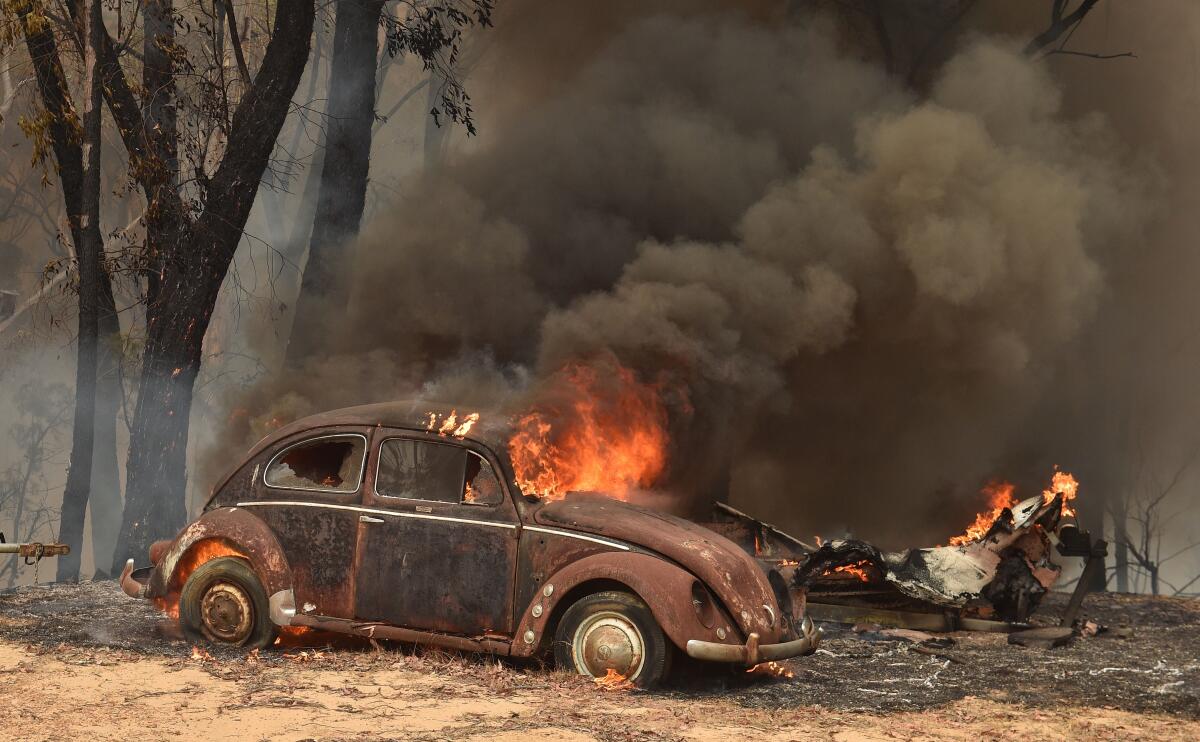Australia’s most populous state declares wildfire emergency

- Share via
PERTH, Australia — Australia’s most populous state of New South Wales declared a seven-day state of emergency Thursday as oppressive conditions fanned around 100 wildfires.
Around 2,000 firefighters were battling the blazes, half of which remain uncontrolled, with the support of U.S. and Canadian backup teams and personnel from the Australian Defense Force.
The last state of emergency ran for seven days in mid-November amid “catastrophic” fire risk and was the first implemented in New South Wales since 2013. Central Sydney reached a maximum of 102 degrees Fahrenheit on Thursday, while outer suburbs were at 108.
A statewide total fire ban announced Tuesday will remain in place until midnight Saturday.
Around 7.4 million acres of land has burned nationwide during a torrid last few months, with six people killed and more than 800 homes destroyed.
The annual Australian fire season, which peaks during the Southern Hemisphere summer, started early after an unusually warm and dry winter.
New South Wales Premier Gladys Berejiklian said authorities were concerned by the unpredictable conditions.
“With extreme wind conditions, extreme hot temperatures, we have a good idea, a good sense, of where the most concerning areas are, but again when you’ve got those turbulent conditions, embers and spot fires can occur very unpredictably,” she told reporters.
Sydney’s air pollution levels Thursday ranged from poor to hazardous. During the last month, hazardous smoke has often blanketed Australia’s most populous city and made its skyline barely visible.
Hospitals have recorded a 10% increase in visits from patients with respiratory conditions during the last week.
Wildfires are also burning in Queensland, South Australia and Western Australia.
The Bureau of Meteorology said Tuesday was the hottest day on record in Australia with an average of 105.6 nationwide.
Perth, the capital of Western Australia, is experiencing its hottest December with average temperatures for the month at 97, 7 degrees above the mean.
Adelaide, in the southeast, is experiencing a four-day heat wave culminating in a high of 113 on Thursday.
The unprecedented conditions have reignited debate on whether Australia’s conservative government has taken enough action on climate change. Australia is the world’s largest exporter of coal and liquefied natural gas.
Protesters on Thursday camped outside Prime Minister Scott Morrison’s Sydney residence demanding urgent action on climate change.
Morrison, who is traveling, conceded last week that “climate change along with many other factors” contributed to the wildfires.
More to Read
Sign up for Essential California
The most important California stories and recommendations in your inbox every morning.
You may occasionally receive promotional content from the Los Angeles Times.












